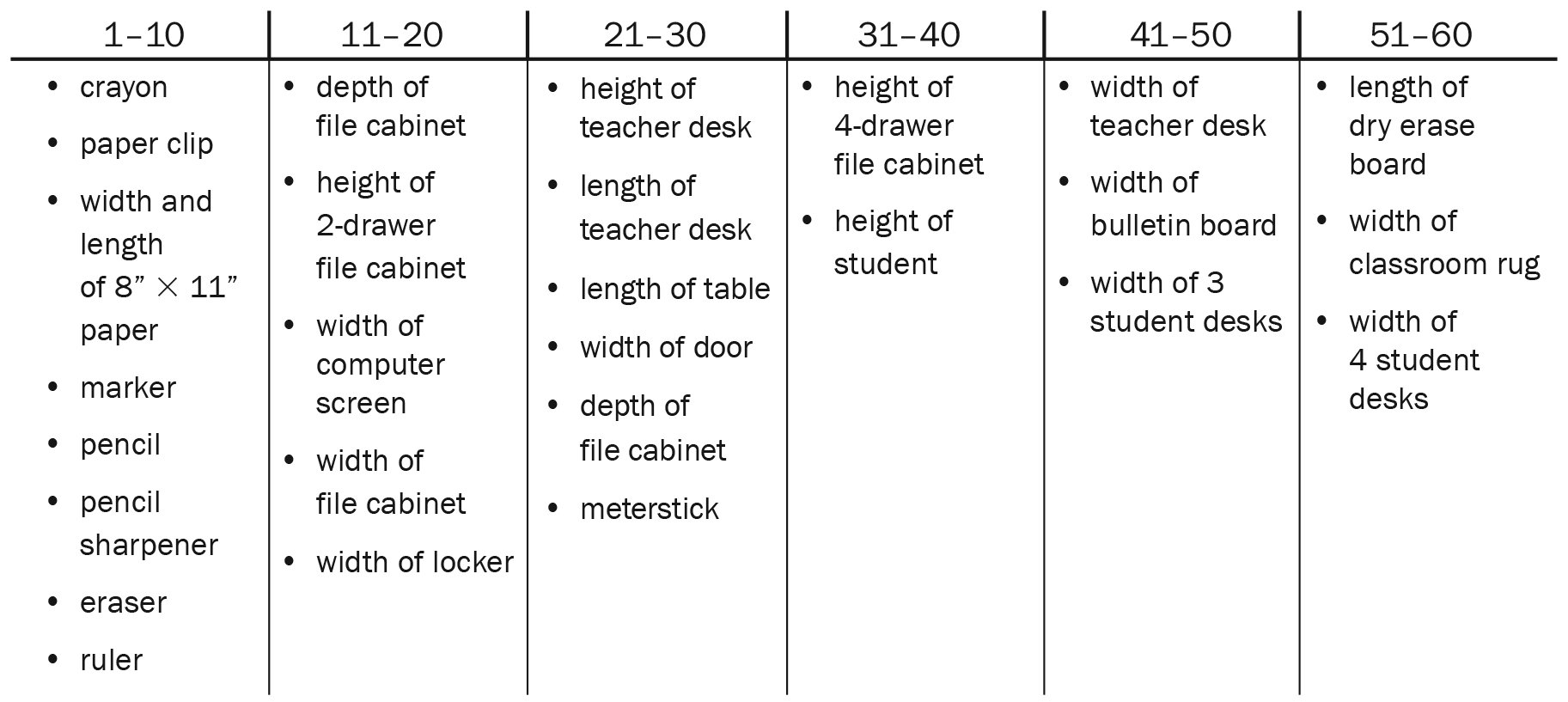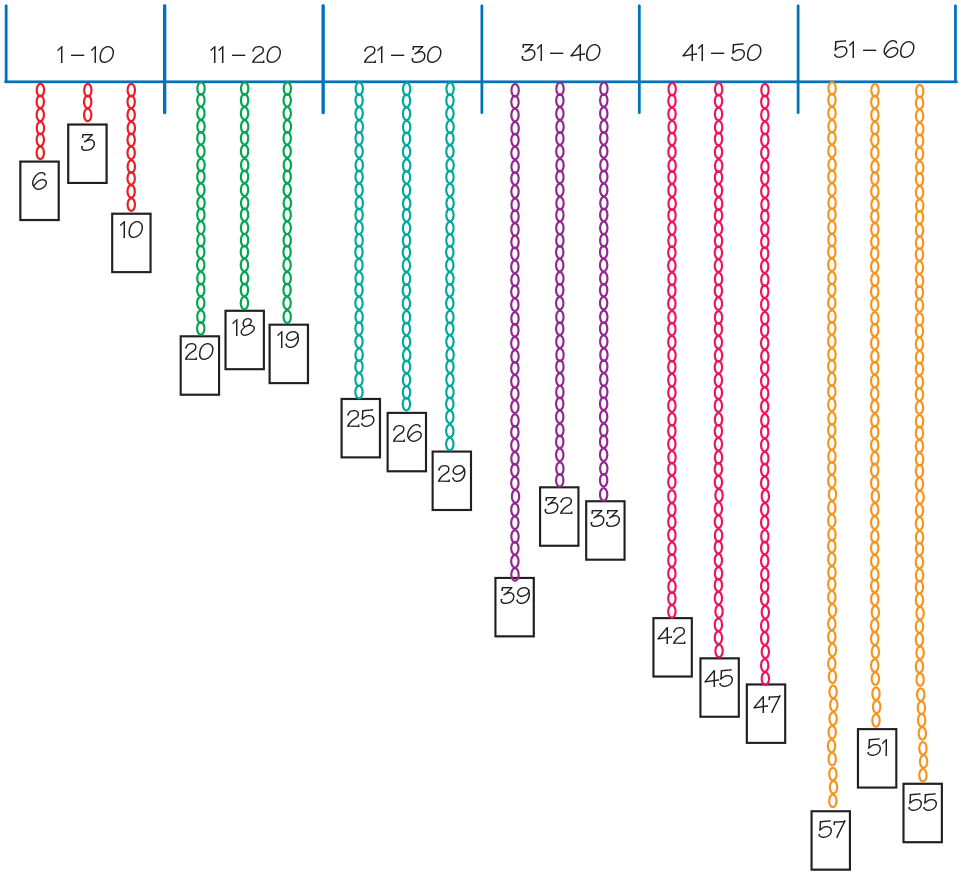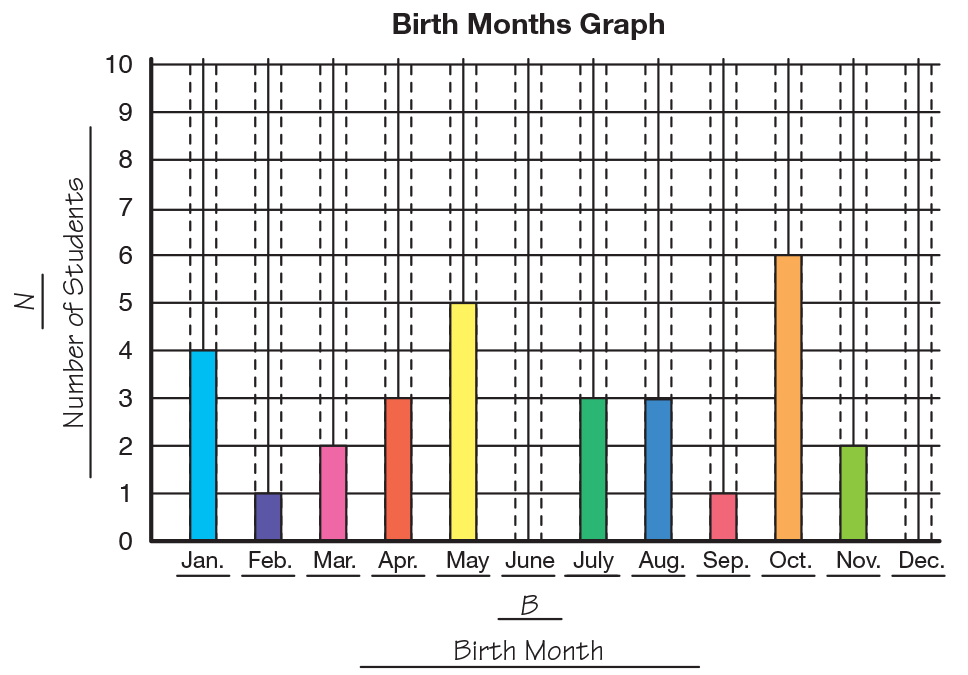|
|
Daily Practice and Problems |
Lesson |
Homework |
Assessment |
Student Book |
Student Activity Book |
|
|
|
|
Teacher Resources |
Teacher Guide - digital |
|
|
|
|
Supplies for Student Pairs
1 index card, 3" x 5". See Materials Preparation.
1 blank index card
60 connecting links in different colors (6 groups of 10 links in alternating colors)
desk number lines (0–40)
scissors
plain paper, optional
glue or tape, optional
Materials for the Teacher
Display of 100 Chart (Student Activity Book) Reference
Display of Where Does the Number Fit (Student Activity Book) Pages 299–301
Unit 10 Assessment Record
index cards
chart paper
tape
class number line (0–130)
60-link chain (6 groups of 10 links in alternating colors)
self-adhesive notes
Materials Preparation
Prepare Display of Number Intervals. Draw six sections of number intervals on a chart: 1–10, 11–20, 21–30,
31–40, 41–50, 51–60, as shown in Figure 1. Make the intervals wide enough so that there will be room for the
number of chains you will place within an interval.

Figure 1: Intervals of 10
Prepare Cards for Measuring Activity. Prepare one card for each student pair by writing the name of an object for
students to measure. Select at least one object from each interval. Have some blank cards available to write some
of the objects that the class suggests during the class discussion. See Figure 2 for a sample list of objects.

Figure 2: Sample list of objects that fit within each interval
TIMS Tip
Figure 2 is a sample list of objects that fit within each of the intervals. However, there are a variety of sizes for many of the items
listed. Before the lesson, measure your own classroom items to see if they fit within each of the intervals.
TIMS Tip
You might consider using other intervals in addition to the ones used here; for example, you could use intervals of 25.
Prepare a 60-link Chain. Make six 10-link chains each in a different color. To demonstrate how to measure
objects, connect the six 10-link chains to make a 60-link chain with alternating colors.
Prepare Optional Targeted Practice. Place customized copies of the Where Does the Number Fit Again Master
from the Teacher Guide in a learning center along with a 100 Chart, ten frames, and number lines.



















